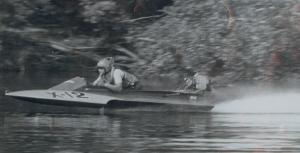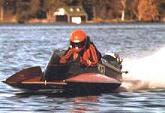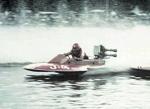
Originally Posted by
Bill Van Steenwyk

Jerry:
I think you are exactly right. There was a young kid (at the time) who used to pit for Ray Hardy and John Winzler. I can't for the life of me remember his name now, but it will come back in the middle of the night sometime. Anyway, he was very close with Harry and Harry kind of took him under his wing when he (the young man) went to work for Kioritz in Chicago. He really did not know much about two strokes other that the general theory at the time he went to work there, but with Harry's help he quickly rose thru the ranks and I believe was promoted eventually to a very high position with Kioritz. Harry was VERY helpful to him and basically taught him everthing he knew about engines. In turn, the young man was very greatful to Harry and did many nice things for him in return, including providing him, at little or no cost, many Kioritz products such as lawn trimmers, chainsaws, etc., that were NOS that were going to be scrapped when the newer models came out. Harry sold these, made a little cash, and everybody was happy. I think the young man would gladly confirm that he owed his success with that company to Harry and what knowledge he imparted to him. As you said, something very few people ever knew about. I happened to see a program on the History Channel about two years ago about all kinds of lawn and garden power equipment. It was narrated and the equipment demonstrations were done by this young man, who at that time was still employed by Kioritz.
I tried to find him two years ago after seeing the program as Mike Krier and I wanted him to present the ZAK Award that year, but unfortunately he is not with Kioritz anymore and I was unable to locate him, either there or in Chicago. Kioriz products also go under the name of ECHO.
Just remembered his name (before the middle of the nite) ANDY KUZMAR


 Thanks:
Thanks:  Likes:
Likes: 



 Reply With Quote
Reply With Quote





Bookmarks